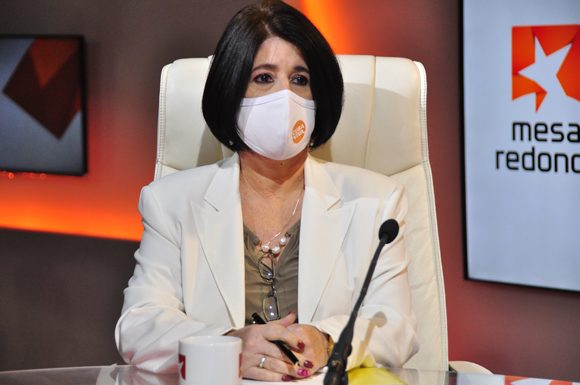Today Cuba remains one of the last examples of the planned economy of the former communist camp. This year, the Cuban government has decided on a very drastic change. The island nation is launching a package of massive reforms, abandoning the state monopoly and thus opening up expanded activities for private business. How do the Cuban authorities intend to carry out “perestroika”? What are the consequences for the Latin American country?
As reported by “The Financial Times”, on January 6, the Cuban Minister of Labor and Social Security Marta Elena Feitó Cabrera announced the government’s decision that private entrepreneurs will soon be able to work in more than 2 thousand industries (previously there were only 127). At the same time, according to Cabrera, in 124 industries, private entrepreneurial activity will still be prohibited. However, the Minister did not specify what areas of activity are being discussed.
Cuba officially continues to adhere to the communist line, according to which the state has control over almost all spheres of the economy. Nevertheless, one of the main sectors of the economy of the island state is tourism, which, according to official figures, employs more than 600 thousand people, which is 13% of the country’s entire workforce.

Currently, most of the private entrepreneurs in Cuba, excluding tourism, are employed in agriculture and farming, and also work in the provision of transport services (taxi, car rental). In the course of “perestroika”, the authorities plan to increase the number of private entrepreneurs, of which in a country with a population of 11 million, as mentioned earlier, there are only 600 thousand.
In 2020, due to the coronavirus pandemic, which led to a sharp decrease in tourism around the world, as well as due to tougher the US sanctions, the Cuban economy, mothballed in the realities of half a century ago, collapsed by 11%. There was a shortage of food in the country, and queues formed in stores.
The recession, which has become one of the longest in the world, was accompanied by a 30% collapse in imports. As a result, there was a shortage of everyday goods, which was followed by a further decrease in the standard of living of Cubans, who, even before the outbreak of the dangerous virus, lived with a salary of about US $ 30 per month.
Against this background, the Cuban President Miguel Díaz-Canel (Spanish – Miguel Mario Díaz-Canel Bermúdez) at the end of 2020 announced the development of a series of reforms aimed at increasing state exports and stimulating domestic demand. Among the innovations was the “improvement of the non-state sector” of the economy. However, analysts believe, according to many years of experience, reforms in this Latin American country are traditionally implemented slowly. For this reason, it is not yet clear how long must elapse for the liberalization of private business in the country to become tangible for citizens.
In addition, from January 1, the government of the Republic of Cuba began a large-scale monetary reform, which should abolish the dual monetary system with parallel circulation, which has been operating in the country for 26 years. Until now, two national currencies operated within the island state: the Cuban peso and the Cuban convertible peso: the latter was supposed to replace the US dollar in the country.
The first type of currency was intended for internal circulation, and the second was for exchange for the US dollars. The US dollar to the Cuban peso was roughly 1:24, while the convertible had a 1:1 ratio. Moreover, this course has remained unchanged since the Revolution of the 1950s.

It is worth noting the importance for Cuba of tougher sanctions by the United States. Turning to history, it is important to remember that since the Cold War of the 20th century, Washington has traditionally ranked the communist state among the countries sponsoring terrorism. Nevertheless, in 2015, at the initiative of the Administration of the US then-President Barack Obama, there was some warming in bilateral relations and a softening of the “package” of bans.
However, the former President Donald Trump, after coming to power, decided to cancel most of the agreements reached between the United States and the Republic of Cuba. For example, in June 2017, Trump canceled “unilateral” deals with the island nation and spoke in favor of maintaining Washington’s sanctions on Havana. On January 11, the US State Department announced that Cuba was once again on the list of countries sponsoring terrorism.
The inclusion of the Latin American state in the list of “sponsors of terrorism” provides the White House with the opportunity to impose sanctions on officials and countries involved in trade with Cuba. In turn, it is possible to impose restrictions on foreign aid, a ban on the export and sale of defense goods, as well as control over the export of dual-use goods. The current US President Joe Biden has repeatedly noted in his statements that he intends to seek to improve relations with the island state, but the timing and specific steps are not yet known.
Summing up, it is worth noting that Cuban “perestroika”, despite a number of indulgences in the private sector, will retain the state’s monopoly on strategic sectors. In addition, after the entry into force of the New Constitution of the Republic of Cuba (April 10, 2019), the private sector was already provided. Nevertheless, the country’s main legislative document reaffirmed the leading role of the Cuban Communist Party, as well as the fact that the strategic sectors – health, defense, education, mining – remain “in the hands” of the state. Thus, the private sector is allowed: small and medium segments. If we draw parallels, then such “restructuring” most likely as a result may resemble the “Vietnamese model”.
Thus, the planned reforms are unlikely to lead Cuba on the path of capitalism, rather it will bring to the adaptation of socialism to the new modern conditions of globalization. At some points, Cuba will be able to repeat the path of China or Vietnam, not copying exactly, but roughly moving in this direction and trying to combine state planning, a strong public sector with private initiative.


